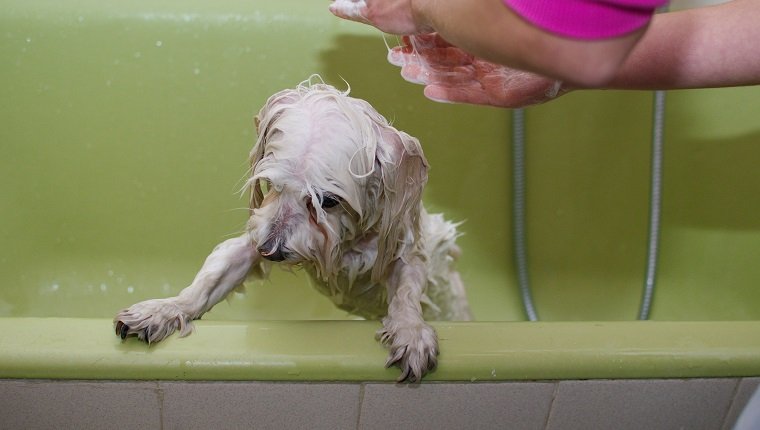Contact dermatitis in dogs is a condition that results in inflammation from contact with allergens or substances that damage or irritate the skin. It can affect dogs of any age, though some breeds with genetic predispositions and dogs with weakened immune systems are more likely to show signs.
It’s usually divided into two forms. The first, allergic contact dermatitis, happens when the immune system overreacts to a normally harmless substance, causing inflammation. This form can be seasonal in dogs, showing up at certain times of the year when allergens are more present.
The other form, irritant contact dermatitis, happens when a substance directly damages the skin, as is the case with some plants and chemicals, for example.
If you see the signs of either form of contact dermatitis, contact your veterinarian for a treatment plan to help your dog. Here’s what you should know about the symptoms, causes, and treatments for contact dermatitis in dogs.
Symptoms Of Contact Dermatitis In Dogs

Symptoms of contact dermatitis in dogs appear on the skin and can cause a good deal of itchiness or discomfort. It may take up to 48 hours after contact with an allergen or irritant for these symptoms to appear. You may see swelling, bumps, rashes, or other skin conditions.
These generally appear on body parts that come into contact with the ground when a dog is walking, sitting, or lying down. These areas include the chin, neck, groin, anal region, chest, abdomen, tail, genital region, and between toes. However, other body parts may be affected depending on where skin made contact with the irritant or allergen.
Symptoms may appear more often at certain times of the year in cases of seasonal allergic contact dermatitis.
Here are a few symptoms to look out for in dogs with contact dermatitis:
- Patches of soreness
- Inflammation
- Itchiness
- Blisters
- Alopecia (hair loss)
- Lesions or ulcers
- Redness or changes in skin color
- Scaly, dry, or thickened skin
- Discharge from the affected area
- Wounds from scratching, chewing, or licking
- Runny eyes or nose
- Secondary bacterial infection
Causes Of Contact Dermatitis In Dogs

The cause of allergic contact dermatitis in dogs is an overreaction of the immune system to a normally harmless allergen, while the cause of irritant contact dermatitis is damage to the skin caused by the irritant, itself.
It can be difficult to distinguish between the two forms of contact dermatitis, and the condition can actually be a symptom of other conditions, too. It is important to contact your vet and try to tell them about possible irritants your dog recently came into contact with if you can.
Here are a few common irritants and allergens that may cause contact dermatitis in dogs, though there are many other possible causes:
- Plants
- Gardening supplies and chemicals (mulch, cedar chips, fertilizer, pesticides, etc.)
- Fabrics, leather, rugs, or carpets
- Plastics, rubber, concrete, or metal
- Abrasive surfaces
- Soaps or shampoo
- Household cleaners, deodorizers, detergents, or floor wax
- Creams or lotions
- Medications
- Bacterial, fungal, or parasitic infections
- Insect bites
- Food allergies
- Flea collars or medications
- Sunlight or heat
- Other conditions such as lupus or dandruff
Treatments For Contact Dermatitis In Dogs

Treatment for contact dermatitis in dogs usually begins with removal of the substance causing the symptoms. This can be done with certain shampoos or washes that clear the skin of irritants and allergens.
Treatment will also likely include anti-inflammatory drugs and antihistamines. Your vet may prescribe prednisone or a similar drug to reduce inflammation or a medication such as Benadryl for quick relief of allergy symptoms. They may also prescribe other drugs.
In severe cases, your vet may prescribe medication for four weeks or more. During the time of recovery, they may advise you to confine your dog and keep them away from any other possible harmful substances. If a secondary infection arises, your vet may prescribe antibiotics.
Once the reaction is under control, it’s important to take steps to minimize the chance of contact with the offending substance in the future. In cases of allergic contact dermatitis, your vet may advise you to wash your dog more frequently with medicated shampoo, or you may find some homemade, natural allergy treatments to be effective, as well.
You should discuss these options with your veterinarian.
Does your dog suffer from contact dermatitis? How do you treat the condition? Let us know in the comments below!









